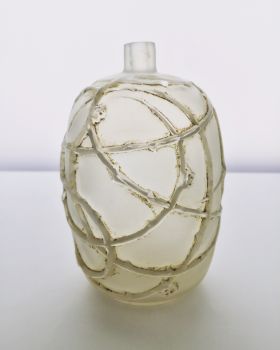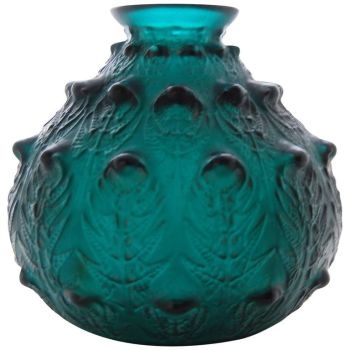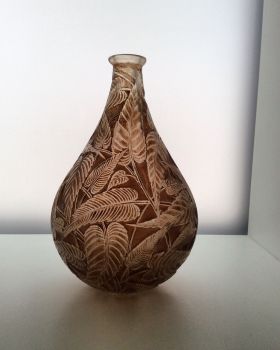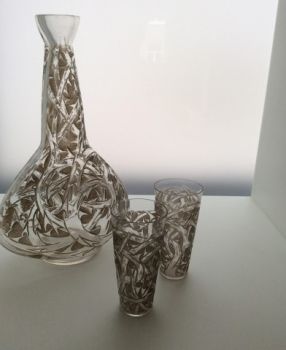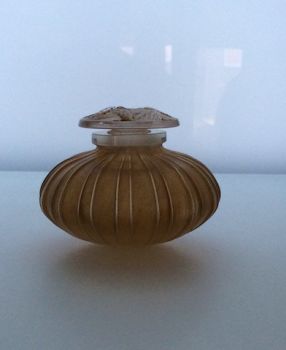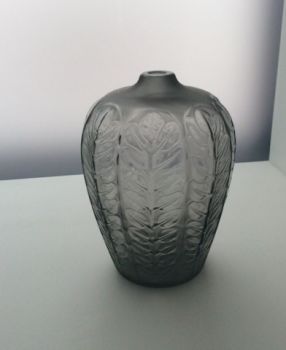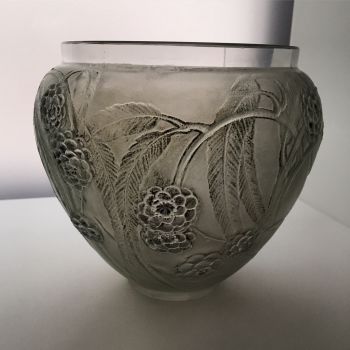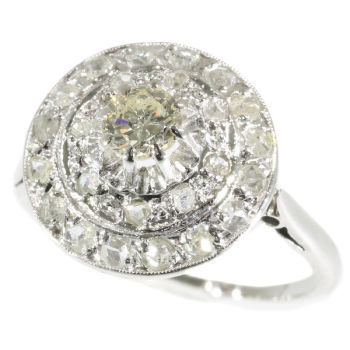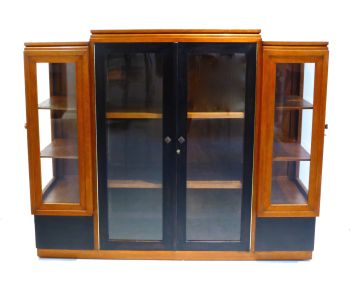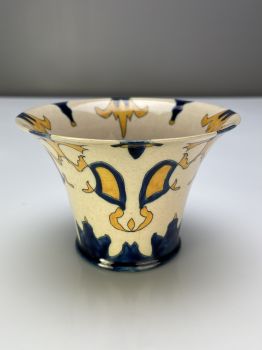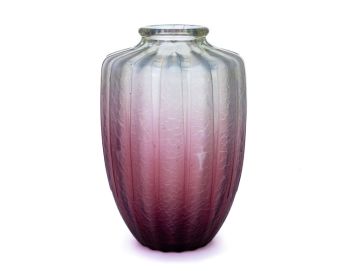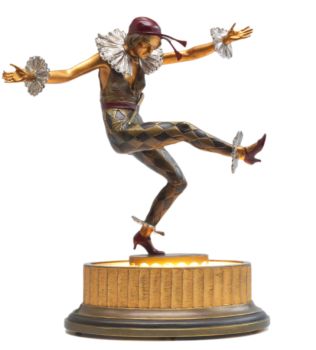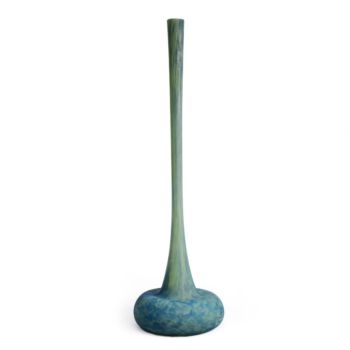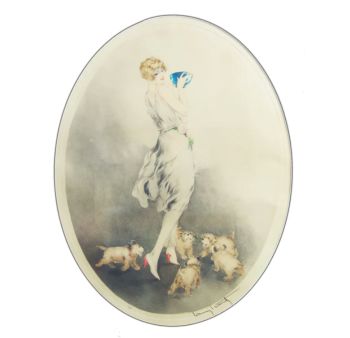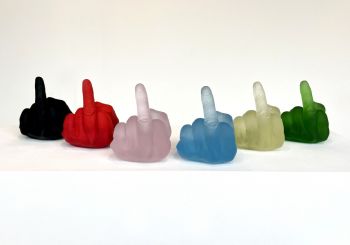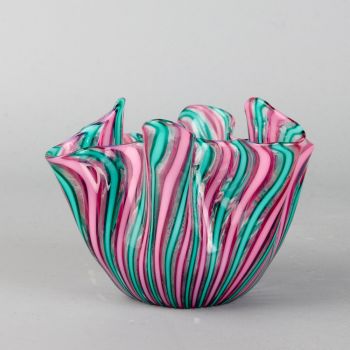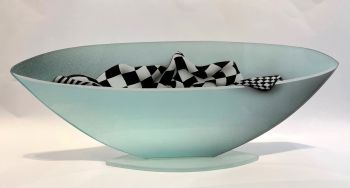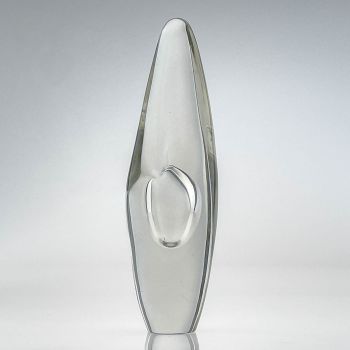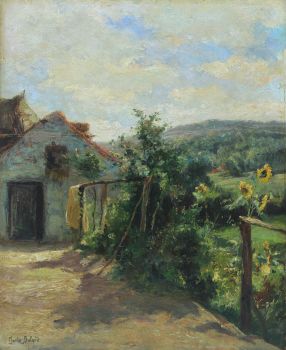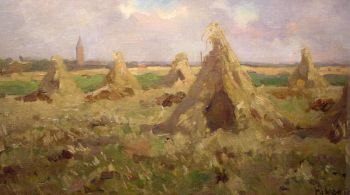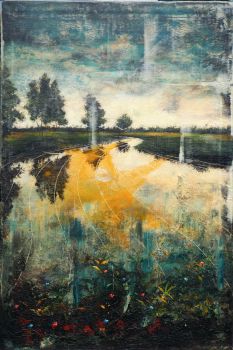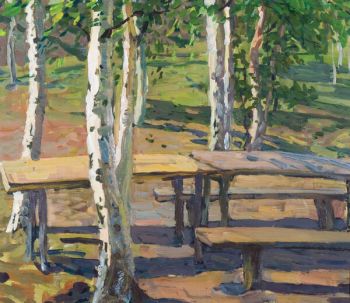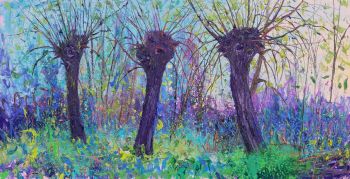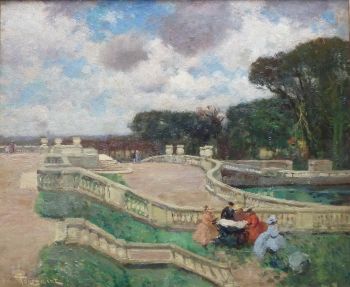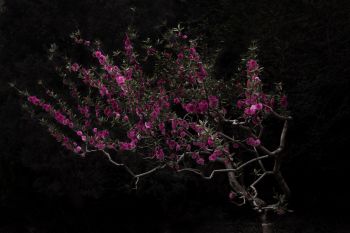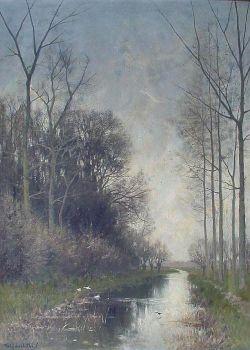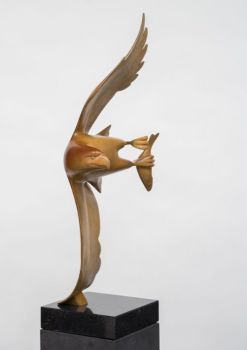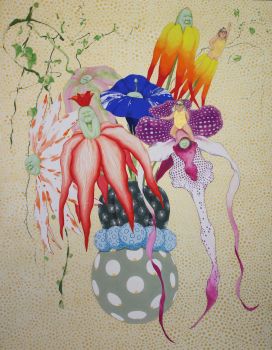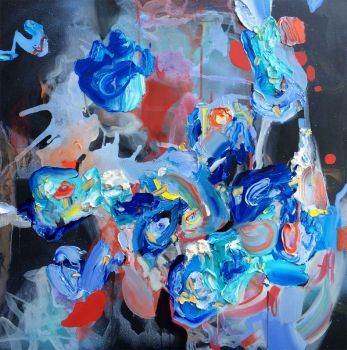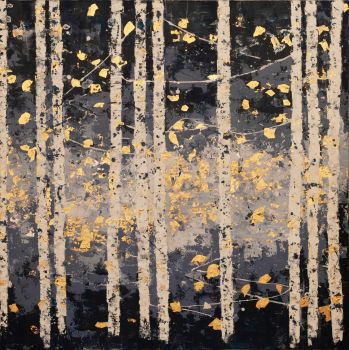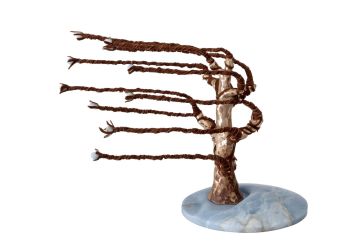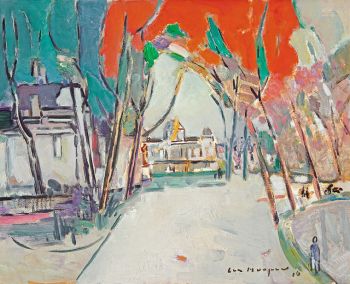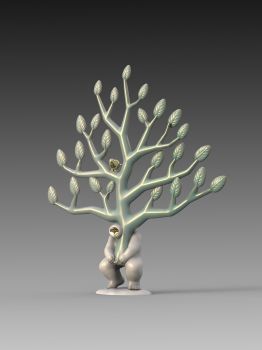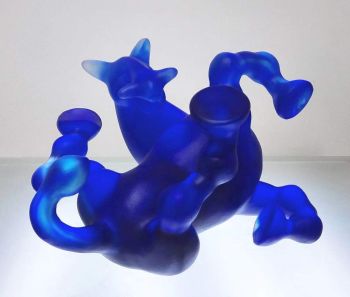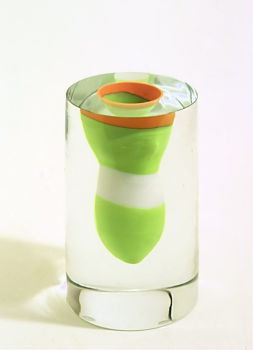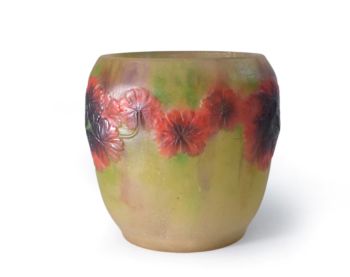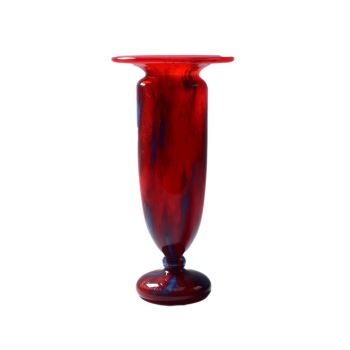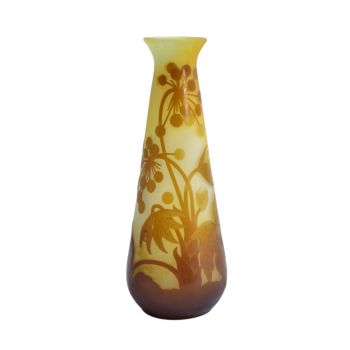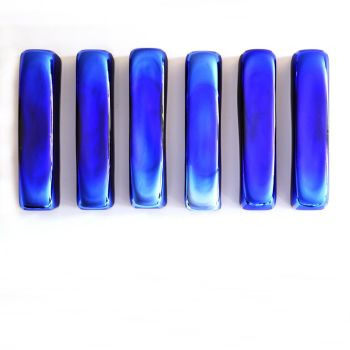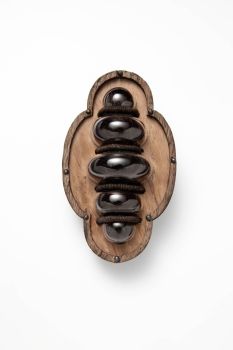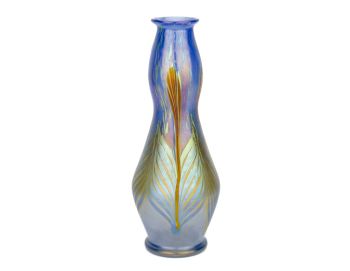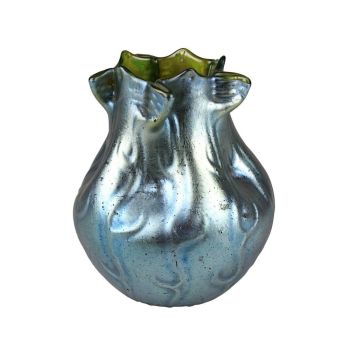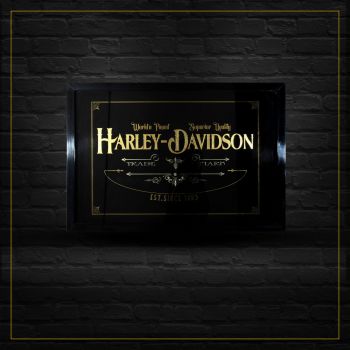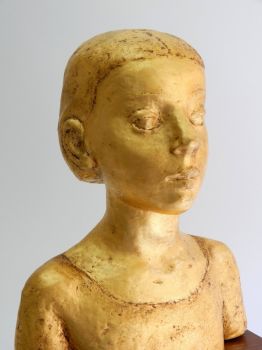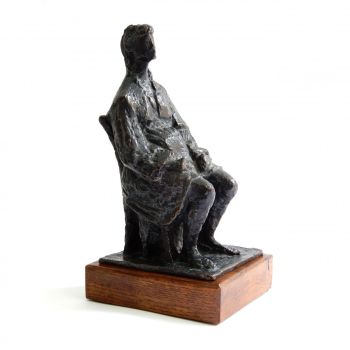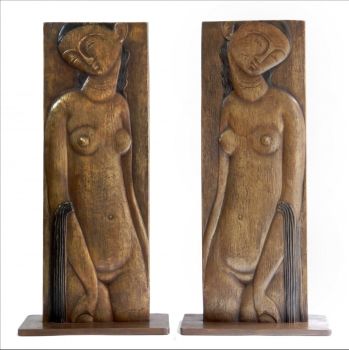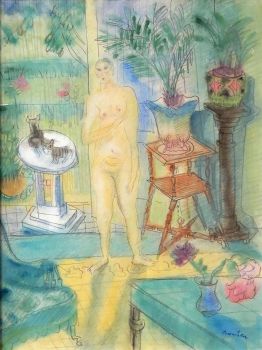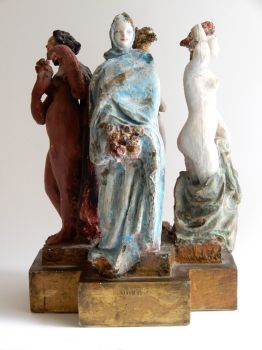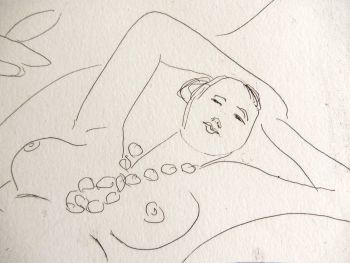Small vase 'Oléron' or 'Petits poissons' 1928 - 1932
René Lalique
Bicchiere
9 cm
ConditionExcellent
Prezzo su richiesta
Dille Art
- A proposito di opere d'arteAbout this piece
Spherical vase with numerous small fish, the vase is called 'Oléron' but is also called 'Petits poissons'.
The vase is extremely refined and beautifully made, it is executed in opalescent glass. The glass consists of multiple layers of opalescent and transparent glass on top of each other, this can be clearly seen at the neck, like the rings of a tree, you see a kind of rings that differ in colour intensity, those are the different layers of glass, (cased opalescent glass), it is a difficult technique. The vase still has very light traces of a patina, so it has had a patina. Through use and especially through cleaning the vase, the infamous annual scrub, the patina has been lost almost completely. In itself, this is not a problem at all because it was an addition to the design. Lalique originally made and sold the vase with and without patina. It just depended on the preference of the buyer. To achieve opalescent glass, a special alloy is needed, everyone had their own secret recipe. René Lalique used, in addition to the usual ingredients such as silicon dioxide or sodium, arsenic, which was banned after the war, and real gold, to increase the colour intensity. Opalescent glass has the special property that it appears bluish/white when backlit, and when light shines on the vase, the glass gets an intense golden glow, as if the sun is shining on it. Very beautiful. The first photo was taken while the vase was placed in front of the window with the sun shining outside. The rather distracting background has been removed, but nothing has been done or altered to the vase itself.
The vase is blown into the mould. It is a design by René Lalique from 1927 and has model number 1008. It was listed in the catalogue of 1928 and 1932.
The vase is signed on the underside with: 'R. Lalique, France, No. 1008'. This signature is applied with the wheel (molette). This way of signing, with the addition 'France' and the model number, was only used between 1928-1932. After 1932, the model number was omitted. According to literature, this was also only done with objects that were blown into the mould, very occasionally an object was still signed in this way if the pressed signature was not clear.
At some point, in the early 1930s, René Lalique, partly due to the crisis, decided to no longer produce designs with labour-intensive finishes. This vase was also part of that decision, and it is therefore no longer mentioned in the 1937 catalogue.
The Municipal Museum of The Hague also has an opal Oléron vase in its collection. - A proposito di opere artistaRené Jules Lalique (6 aprile 1860, Ay, Marne - 1 maggio 1945, Parigi) è nato il 6 aprile 1860 ad Ay, Marne. Era un designer di vetro francese noto per le sue creazioni di arte del vetro, bottiglie di profumo, vasi, gioielli, lampadari, orologi e ornamenti per cofani di automobili. Nel 1872, all'età di dodici anni, entrò al Collège Turgot dove iniziò a disegnare e disegnare. Ha frequentato corsi serali presso l'Ecole des arts décoratifs. Lavorò lì dal 1874 al 1876 e successivamente trascorse due anni alla Crystal Palace School of Art di Sydenham, a Londra. Al Sydenham Art College, le sue capacità di progettazione grafica sono state migliorate e il suo approccio naturalistico all'arte è stato ulteriormente sviluppato. Quando tornò dall'Inghilterra, lavorò come artista freelance, disegnando gioielli per i gioiellieri francesi Cartier, Boucheron e altri. Nel 1885 aprì la propria attività e disegnò e realizzò i propri gioielli e altri pezzi di vetro. Nel 1890, Lalique è stato riconosciuto come uno dei più importanti designer di gioielli Art Nouveau in Francia; creando pezzi innovativi per il nuovo negozio parigino di Samuel Bing, Maison de l'Art Nouveau. È diventato uno dei più famosi nel suo campo, il suo nome è sinonimo di creatività, bellezza e qualità. Lalique era meglio conosciuto per le sue creazioni nell'arte del vetro. Negli anni '20, divenne famoso per il suo lavoro in stile Art Déco. A lui si devono le pareti di vetro illuminato e le eleganti colonne di vetro colorato che riempivano la sala da pranzo e il "grand salon" della SS Normandie e gli arredi interni, croce, paraventi, pala d'altare e fonte battesimale della chiesa di St. Matthew a Millbrook nel Jersey ( La "Glass Church" di Lalique. Le sue prime esperienze ad Ay furono la sua influenza determinante nel suo lavoro successivo. Di conseguenza, molti dei suoi gioielli e vasi mostrano piante, fiori e linee fluide. Opere uniche e commerciali di René Lalique sono nelle collezioni di un gran numero di musei pubblici in tutto il mondo, tra cui il Museu Calouste Gulbenkian a Lisbona, il Musée Lalique e il Musée des Arts Décoratifs in Francia, lo Schmuckmuseum Pforzheim in Germania, il Victoria e l'Albert Museum di Londra, il Metropolitan Museum e il Corning Museum nello Stato di New York e il Rijksmuseum di Amsterdam. René Lalique muore il primo maggio 1945 a Parigi.
Sei interessato ad acquistare questa opera d'arte?
Artwork details
Categoria
Soggetto
Stile
Materiale e Tecnica
Colore
Related artworks
René Lalique
Uno dei primi vasi "Bluets" disegnato da Rene Lalique (1860-1945)1910 - 1920
Prezzo su richiestaLennart Booij Fine Art and Rare Items
René Lalique
Un rarissimo vaso "Fougeres" verde intenso disegnato da R. Lalique1912
€ 8.950Lennart Booij Fine Art and Rare Items
 A cura di
A cura diSilla Scheepens
René Lalique
Una rara scatola per Nina Ricci circa 19371937
Prezzo su richiestaLennart Booij Fine Art and Rare Items
1 - 4 / 12- 1 - 4 / 24
Johann Loetz (Lötz) Witwe Klostermühle
Johann Loetz Witwe - Phänomen Genre 7773 – Orange1900 - 1910
Prezzo su richiestaAntiques Emporium
Artista Sconosciuto
François-Théodore Legras – Tall “Fleurs de Pommier” apple blossoms vase1900 - 1909
Prezzo su richiestaAntiques Emporium
Demetre Chiparus
Demetre H. Chiparus – Bronze Art Deco statue “Rapture” – Édition Etling, Paris1920 - 1929
Prezzo su richiestaAntiques Emporium
Daum Nancy
Daum Nancy – Tall rare early Art Nouveau vase executed in “Cygnes (swans)” motif – Circa 18921890 - 1899
Prezzo su richiestaAntiques Emporium
Amalric Walter
Amalric Walter & Henri Bergé – Crabe plumier1920 - 1929
Prezzo su richiestaAntiques Emporium
1 - 4 / 24Fredericus Jacobus van Rossum du Chattel
Poldervaart in the Vecht river region1899 - 1901
Prezzo su richiestaKunsthandel Pygmalion
1 - 4 / 24Artista Sconosciuto
Un rare filigrane un gobelet retortoli1550 - 1600
Prezzo su richiestaPeter Korf de Gidts - Antiquairs
Johann Loetz (Lötz) Witwe Klostermühle
Johann Loetz Witwe – Phänomen Genre vaas in blauw opaal – 19021902 - 1903
Prezzo su richiestaAntiques Emporium
1 - 4 / 24Artista Sconosciuto
Japanese art deco lacquervase with Scarab beetle motif1920 - 1950
Prezzo su richiestaDille Art
1 - 4 / 12







